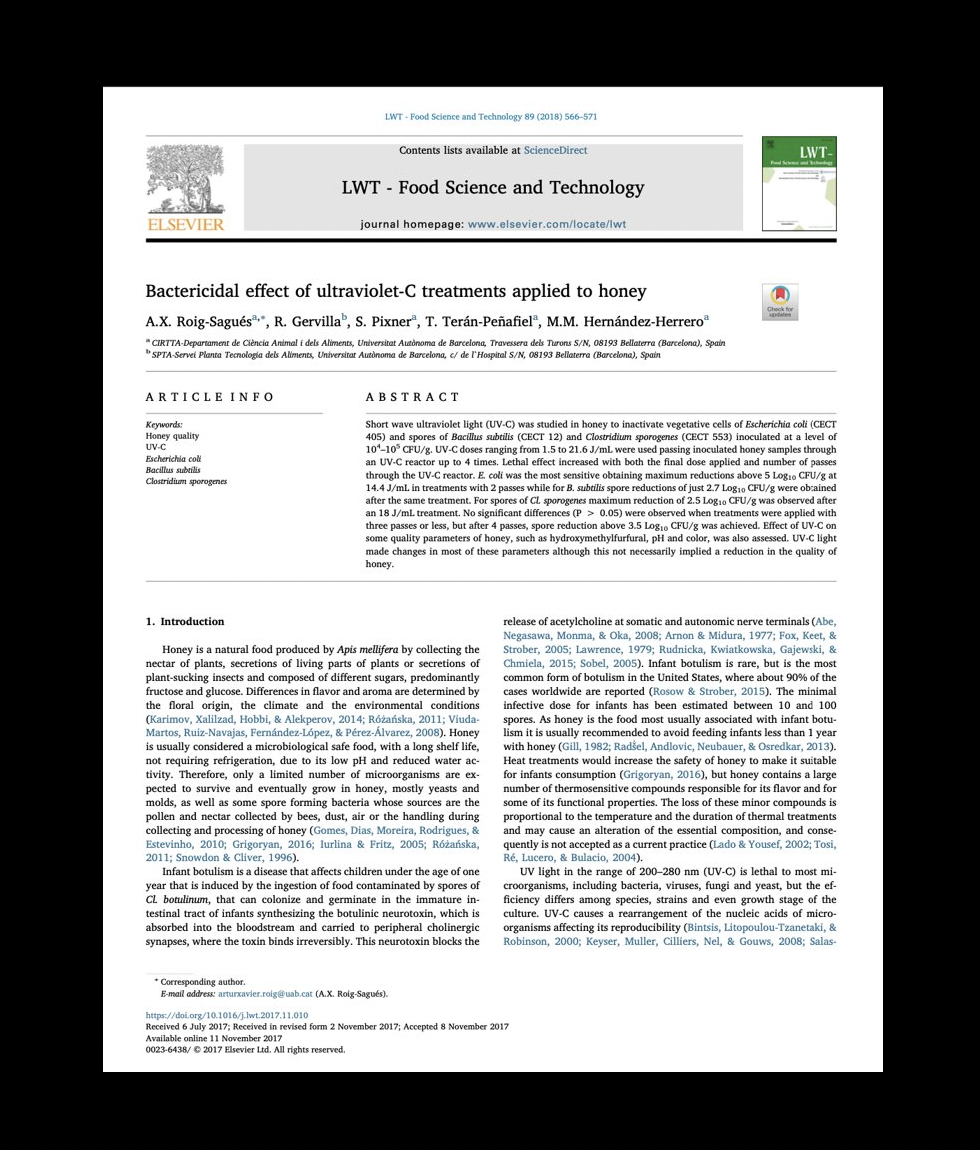Bactericidal effect of ultraviolet-C treatments applied to honey
The effects of short wave ultraviolet light (UV-C) on vegetative Escherichia coli (CECT 405), Bacillus subtilis (CECT 12), and Clostridium sporogenes (CECT 553) cells as well as their spores were investigated in honey. Inoculated honey samples were run through a UV-C reactor a maximum of four times while receiving UV-C doses ranging from 1.5 to 21.6 J/mL. Both the ultimate dose applied and the quantity of runs through the UV-C reactor increased the lethal effect. The most sensitive strain was E. coli, which achieved maximum reductions above 5 Log10 CFU/g at 14.4 J/mL in treatments with two passes. In contrast, B. subtilis spore reductions were only 2.7 Log10 CFU/g following the same treatment. After an 18 J/mL treatment, Cl. sporogenes spores showed the greatest decrease of 2.5 Log10 CFU/g. When treatments were given in three passes or fewer, no differences were discernible (P > 0.05), but after four passes, spore reduction exceeding 3.5 Log10 CFU/g was attained. It was also evaluated how UV-C affected some honey quality indicators as hydroxymethylfurfural, pH, and color. Most of these metrics were altered by UV-C radiation, albeit this did not always imply a decline in the honey's quality.
To read the full study, click HERE.


